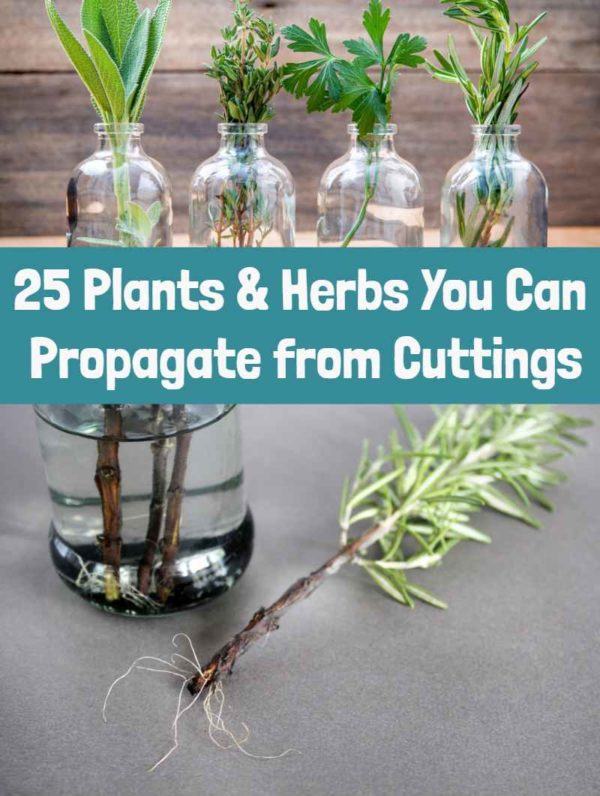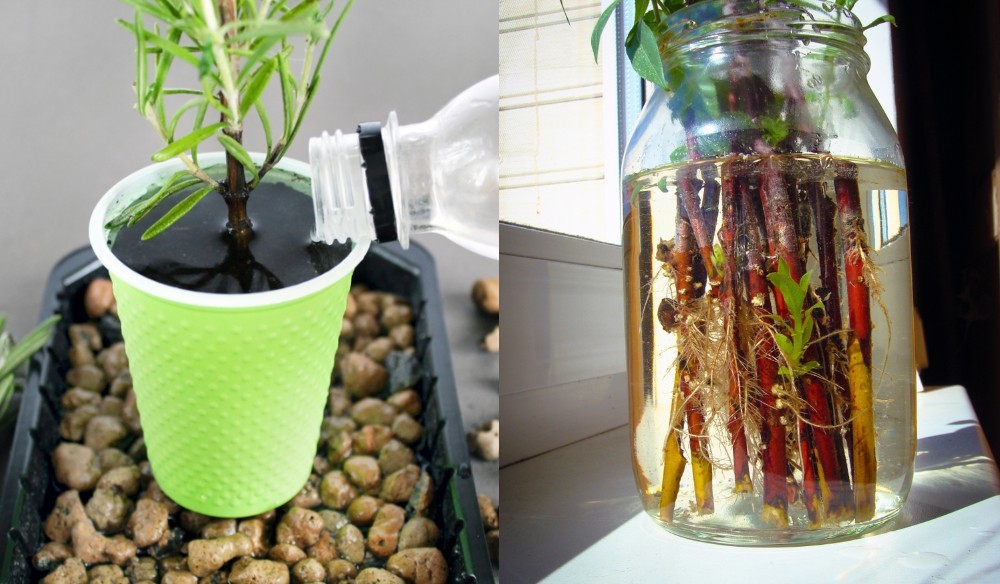
Growing new plants from cuttings is a great way to increase your stock in a relatively short time.
Rooted cuttings are often sturdier than seedlings, and come to maturity faster, many of them bearing flowers and fruits much earlier than seedlings.
For example, if you were to grow English Holly from seeds, it may take years to grow into a good-sized bush and bear the red berries, if at all it does.
Holly is dioecious, having separate male and female plants. After years of waiting, you may end up with a male plant that bears no berries.
Plants grown from cuttings are exact clones of the parent plant, so you know exactly what you’re growing, which is not the case with seed-grown plants.
That’s why many gardeners prefer to grow new plants from cuttings even when they can be easily grown from seeds.
You can pick and choose from existing plants that have desirable characteristics such as good vigor, optimum size, disease resistance, and good yield.
Populating your garden with cuttings may work out to be very cost effective. A single plant can give you plenty of cuttings without jeopardizing its health.
If you have gardening friends, you can exchange cuttings. If not, you can get just one or two plants from the gardening center and take multiple cuttings from them even before planting them out in the garden.
This is the way to go if you need a large number of plants for a hedge or beds. You can even take some tip cuttings from the herb bundles you buy from the supermarket shelves.
Some plants are sterile; they do not make viable seeds. This is the case with many naturally occurring and artificially developed hybrids.
Such plants can be propagated only by cuttings or some other method of vegetative reproduction such as division, layering, grafting or tissue culture.
For successful propagation, cuttings should be taken at the right time, especially for plants that change their growth pattern according to seasonal changes.
There are different types of cuttings depending on the age of the stems from which they are taken.
Types Of Cuttings
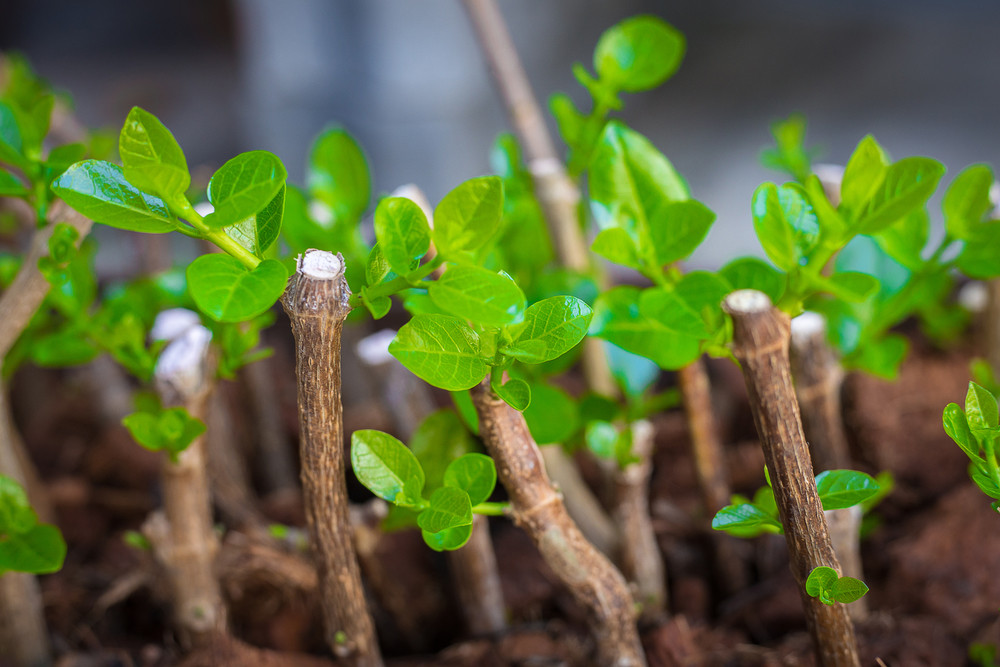
Softwood cuttings –
Taken in late spring or early summer (May-June) from new shoots that appeared that season. The soft, flexible, green stems should be kept moist with frequent misting.
They readily take root and get established in the same season.
Semi-ripe cuttings –
Taken in summer (June – August) from slightly matured stems of that season, they may take a bit longer than softwood cuttings to take root, but the warmth of the summer months helps with root growth.
Hardwood cuttings –
Taken in fall and winter from mature, woody stems, they are ready for planting in next spring.
Ideally, the cuttings should be prepared as soon as the shrubs start shedding leaves so that they can grow enough roots before the spring flush of shoot growth.
You can use different parts of the stem to grow new plants, but some plants can be propagated from leaf and root cuttings too.
Tip cuttings –
6-8 inches long cutting from the growing tip of the stem is taken just below a node. Most herbs can be grown from tip cuttings.
Basal cuttings –
A side branch is taken, cutting it as close to the main stem. Most plants grow readily from 6-10 inches long basal cuttings.
Heel cuttings –
Many shrubs require a bit of the old stem for successful rooting. The side branches are yanked off the parent plant so that they contain a part of the main stem (heel).
Stem sections –
Many cane-forming plants can be propagated by midsections of their long stems. Each 4-6 inch section containing a few nodes can sprout roots at the bottom end and new top growth from side buds.
Since the sections may have the same thickness at both ends, the bottom ends should be marked as soon as you divide the stem.
Root sections –
Some plants like the sumac and the Californian tree poppy are easier to grow from root cuttings than stem cuttings.
A few roots can be dug up in the dormant season without harming the parent plant, and divided into several sections.
Leaf cuttings –
Many succulents grow new plants from whole leaves, but snake plant and begonias can be propagated from sections of the stem.
Helping The Rooting Process
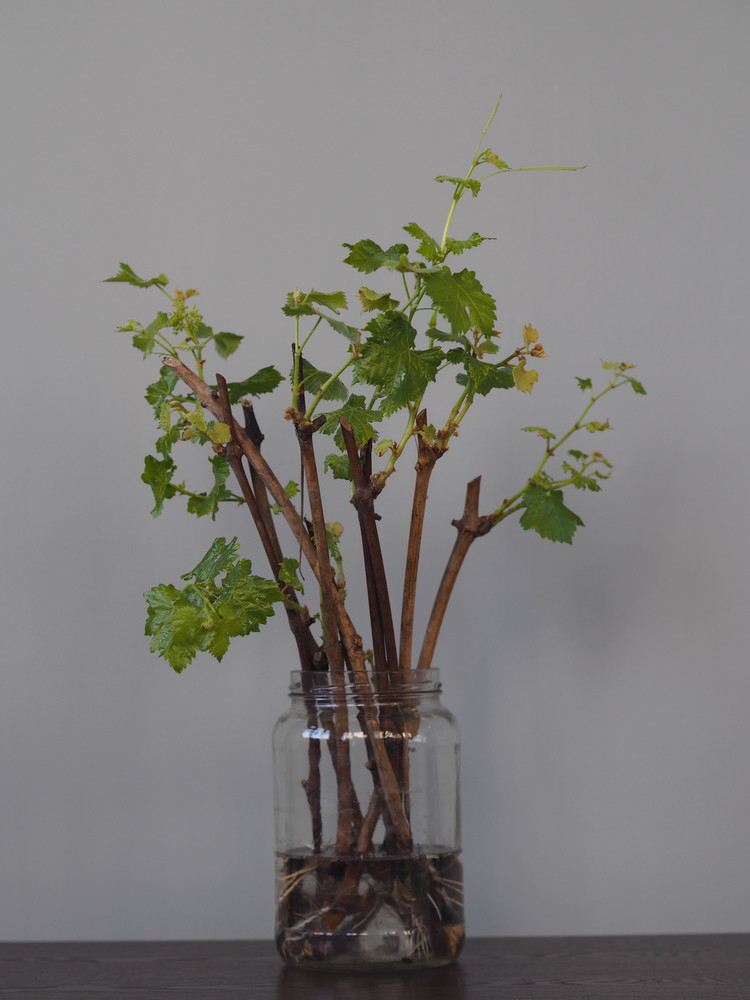
Preparing The Cuttings
The cuttings need to be stripped away from the lower leaves before sticking them in the rooting medium.
For woody cuttings, the bottom end is slightly scraped to expose the cambial tissue. Cuttings of some fleshy stems should be kept aside overnight or for a few days to form a callus––a layer of dry scar tissue––at the bottom end.
Rooting medium
A good rooting medium that keeps the cut end constantly moist is necessary.
Garden soil is better avoided because it contains disease causing organisms and spores that can rot the cuttings.
A combination of peat moss and sand/perlite is good enough for holding enough moisture while allowing good drainage. Do not add any fertilizer to the mix.
Regular misting and watering
The cuttings should not be allowed to wilt. Keep on misting the top portion and water the medium regularly, but ensure drainage.
Covering the pot/propagation tray with plastic helps provide a warm, humid atmosphere ideal for growth.
Most cuttings can actually take root in water, but water-grown roots are relatively fragile, so extra care should be taken while transplanting them into soil.
Providing warmth
Heating pads may be used to provide bottom heat. It encourages root growth.
Rooting hormones
Hormones can be used to ensure greater success with rooting, but are only necessary with some plants that are difficult to root.
An infusion of willow branches can help with rooting. The medium should not contain fertilizers when rooting hormones are used.
The Best Plants To Grow From Cuttings

Image Credit: Mannewaar @ Flickr
Although it doesn’t hurt to experiment with growing any plant or herb from cuttings, many annuals that grow readily from seeds may not be worth the effort.
The cuttings of some plants, particularly fruit trees that are grafted onto rootstocks, will not grow well even if you manage to force out some roots with the help of rooting hormones.
But the following plants give excellent results.
1. Sage
Take 4-inch semi-ripe basal cuttings in fall and pot up. Keep the rooting medium warm and moist throughout winter and then transplant in spring.
2. Thyme
Grow several varieties of thyme from tip cuttings taken in summer and inserted into some moist potting medium.
3. Basil
They are easily grown from seeds, but add to the variety by rooting up tip cuttings taken at any time of the year and kept in a warm, protected place out of direct sun.
4. Rosemary
Take 3-5 –inches long tip cuttings in spring from new growth, or use heel or basal cuttings in fall for rooting in cold frame.
If you don’t want a lot of rosemary plants, root a few cuttings directly in individual pots covered with a plastic dome.
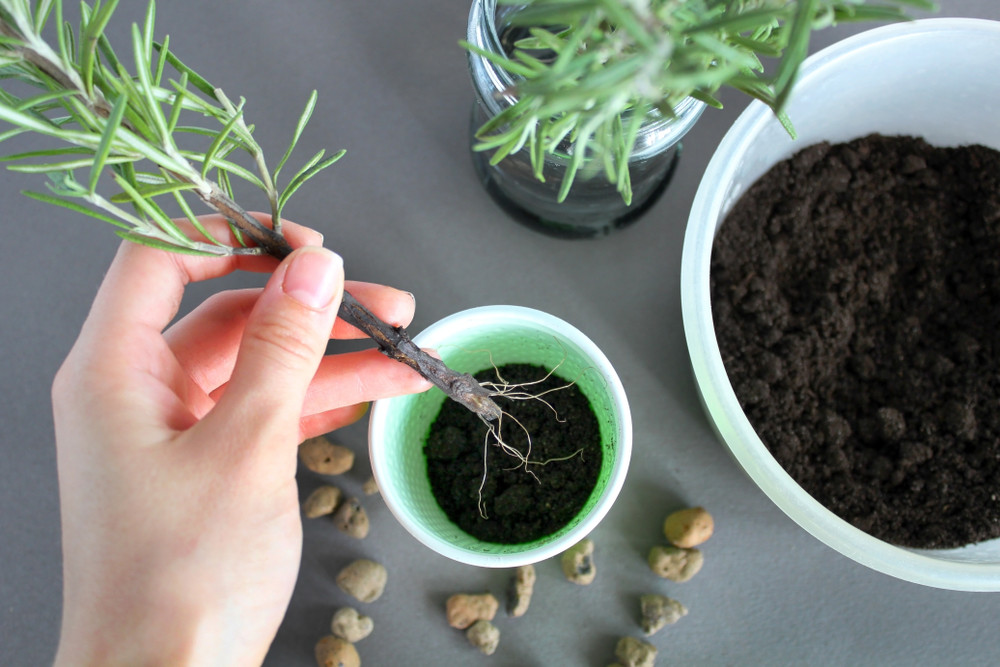
5. Lavender
Take 3-inch tip cuttings in early spring and root them in a cold frame. Transplant the rooted plants into garden beds after 4-6 weeks.
In summer and fall, heeled cuttings can be taken for spring planting the following year.
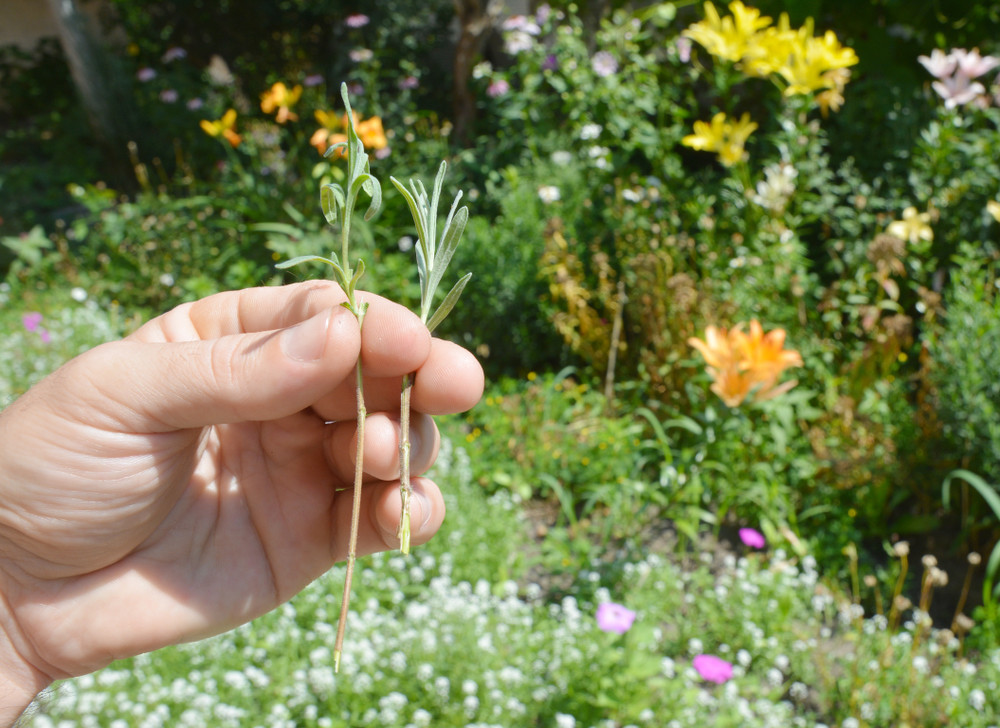
6. Horseradish
Lift the root in early spring and cut into 3-inch sections. Plant them a foot apart directly in the garden bed.
7. Comfrey
Dig up a plant and take root cuttings in either spring or fall. Directly plant in a deeply worked bed and cover with mulch. Its roots grow deep into the soil and bring up the nutrients.
8. African violets
Cut off young, healthy leaves with 2-3 inches of leafy stalk. After poking a hole with a chopstick at a 70-degree angle, insert the stalk of each leaf into a tray of moist compost and sand.
Keep the tray moist and warm and in brightly lit area.
9. Rex Begonia
All you need to grow these big-leaved beauties is a single leaf. Make a few slashes on the prominent veins on the underside of the leaf and lay it on a moist bed of peat moss and sharp sand in equal proportions.
Weight the leaf down with a few pebbles so that the cut edges remain in contact with the bed.
Keep in a warm, well-lit place and watch the new plants appearing at these cut edges.
10. Snake plant (Sansevieria)
2-3 inch sections of the leaf can be used to make new plants. You can thus make a large number of plants from one parent plant.
The only problem with this method of propagation is that the new plants will not carry the original variegation.
Sections of rhizomes should be planted to retain the variegation.
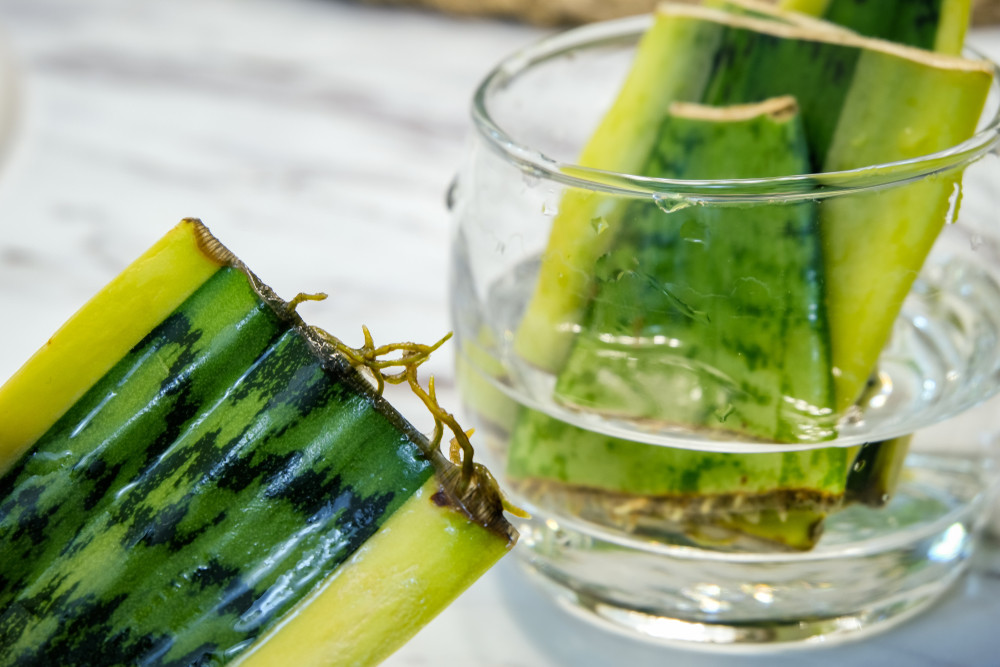
11. Aluminum plant (Pilea cadierei)
Take tip cuttings with 3-4 nodes. Strip the lowest pair of leaves and trim the stem at that node. Insert into moist rooting medium and keep in a warm place.
Keep the medium moist at all times until new growth appears.
12. Coleus
Growing tips, as well as side shoots, arising from the axils of leaves on this plant, will result in new plants. Water the plants very well before snipping off growing tips with 2-4 nodes.
Remove the lower leaves and stick into some moist rooting medium.
You can insert the cuttings into bottles of plain water, but water-grown plants need extra care while transplanting.
13. Geranium
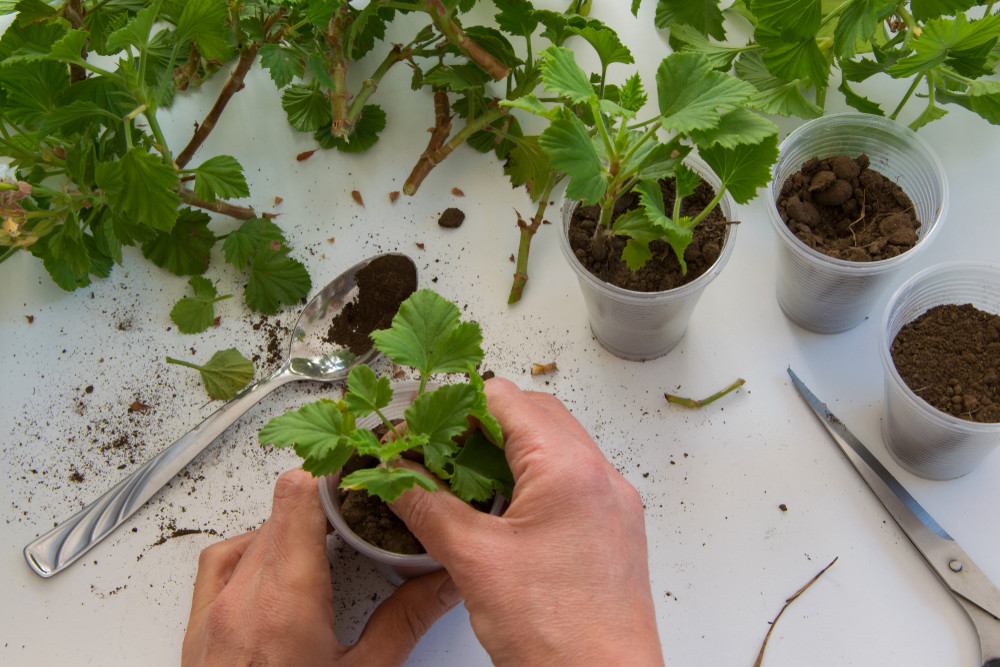
6-8 inches long cuttings can be rooted, but it helps if the parent plant is allowed to wilt slightly prior to taking the cuttings.
Withdraw water for a week and then take the cuttings 12 hours after watering the plant. The rehydrated stems take root more easily.
14. Philodendrons
You can find a large variety of philodendrons with attractive leaf patterns and colors, but the good news is that all of them are easy to grow from cuttings.
Tip cuttings with 2-3 nodes are the easiest to root because they start growing from the tip as soon as the roots form, sometimes even earlier.
Mid sections with 2-3 nodes are also good, but it may take some time for new shoots to develop from leaf axils.
15. Jade plant (Crassula)
These fleshy-leaved plants are great for gifting. If you have one plant, you can make several with stem cuttings taken almost any time of the year, as in the case of most houseplants that are tropical in origin.
Take 3-4 inch long cuttings with a sharp blade and keep them aside for a week. A good callus formation protects the fleshy stems from rot.
Insert the cuttings in a well-draining potting mixture used for succulents.
Water occasionally, allowing the potting mix to become nearly dry in between.
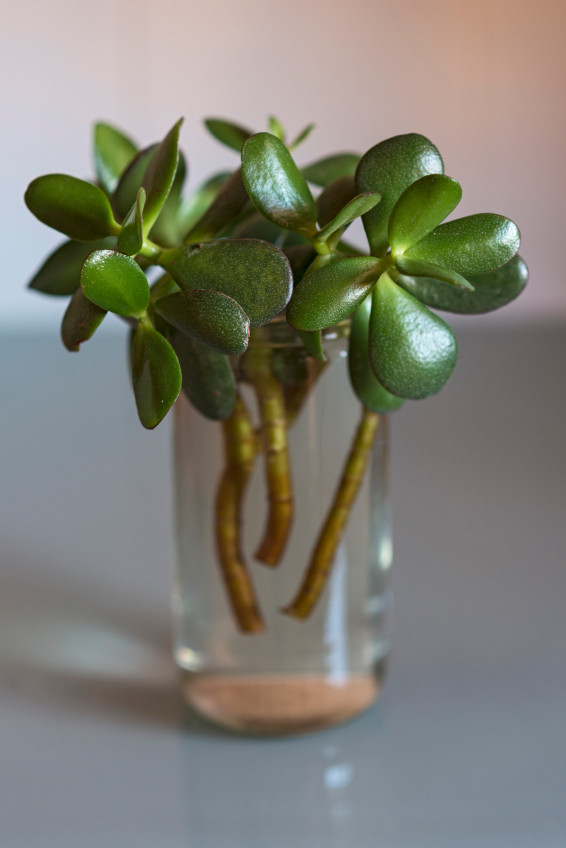
16. Chinese evergreen (Aglaonema spp.)
When these plants become leggy, take tip cuttings and pot them up in moist compost and sand potting mix. Keep the soil evenly moist, not wet.
Mist the leaves to keep them hydrated until new roots can supply water.
Make 3-inch long sections of the remaining stem and lay them horizontally into a tray of moist peat-sand mix.
Partially cover the sections with sand and enclose the tray in clear plastic until new shoots start to push through the plastic.
Pot up the new plants in individual pots.
17. Dumb cane (Dieffenbachia spp.)
The plants keep losing lower leaves as they grow. Cut off the leafy heads and set them aside for a day or two to form a callus.
Pot up in individual containers and keep in a warm place that gets good light. Cut off the remaining bare canes 2 inches above the soil line.
Divide these canes into 3-inch sections and place in rooting trays containing peat and compost. Keep covered until shoots come up.
Keep the original plant in a warm, well-lit area; it will put up new growth in no time.
18. Ti plant (Cordyline spp.)
These cane-forming plants will eventually grow too tall and lanky. Whenever you feel like pruning your Ti plant, make new plants with the cut branches.
Take 1 to 1 ½ ft long growing tips and trim off the lower leaves. Insert into potting mixture in individual pots and keep them in a warm place near a bright window.
If any part of the cane is left over, cut it into sections 8-10 inches long. Mark the bottom end of each section by giving it a slanted cut.
Insert into a bed of moist soil in the garden.
19. Fragrant Corn plant (Dracaena fragrans)
This one is closely related to Ti-plant, so the propagation method is similar. Tip cuttings and mid-section cuttings can be grown into new plants.
20. Fuchsia
One can never have enough of these beauties; luckily they are very easy to grow from cuttings taken in spring.
Tip cuttings with 3 pairs of leaves can be inserted into a moist compost-sand mix and kept covered with plastic to provide humidity and warmth.
Plant them out in summer to get flowers in the same season.
21. Hydrangea
Take 4-inch long tip cuttings carrying 3-4 pairs of leaves. Remove the lowest pair and trim the stem closer to the node.
Insert into moist rooting medium and cover with plastic sheet. You can trim the larger leaves by 3/4th to reduce water loss through evaporation.
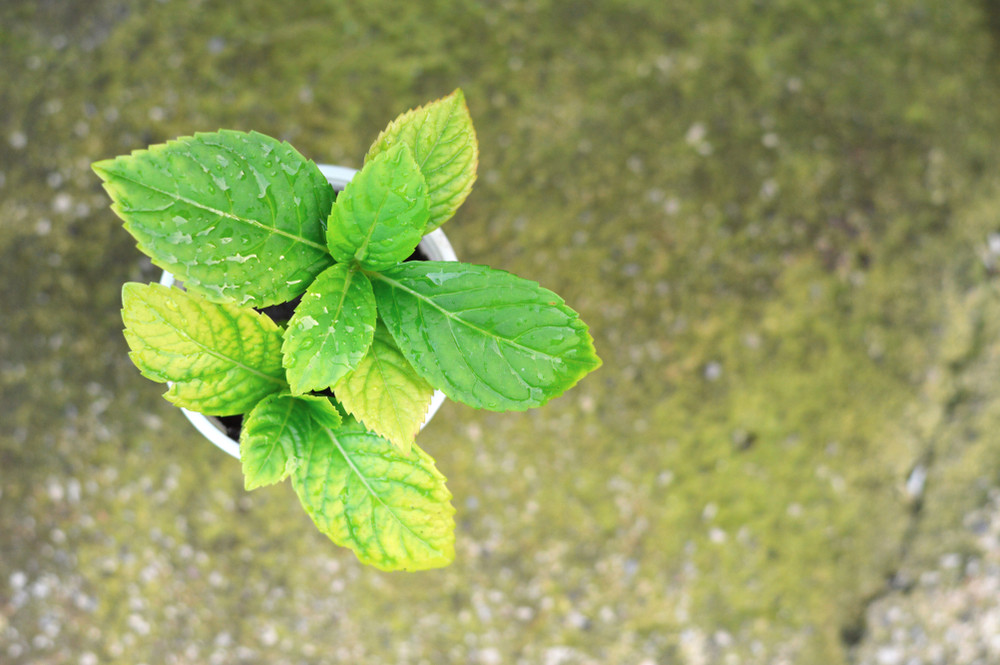
22. Holly
In fall, take 10-12 inch cuttings from a female (one that has borne berries before) bush and wound the bottom one inch.
Dip in rooting hormone powder and pot up in some moist rooting medium.
Cover with plastic sheeting and keep indoors.
23. Californian tree poppy (Romneya sp.)
Dig up some roots in winter (December) and cut them into 3-inch sections.
Lay them horizontally on a tray of moist sand-compost mix. Cover with a glass until shoots appear.
Wait until summer to plant them outside.
24. Rose
Take 12-inch long hardwood cuttings of pencil thickness in fall and plant out in the chosen location. Water the cuttings thoroughly until winter.
25. Weigela
Take 5-inch long softwood/semi-ripe cuttings in late spring or early summer and pot up, keeping under a plastic cover. Plant out in early fall.
Alternatively, take hardwood cuttings in fall. Root them and overwinter them in a cold frame, until they can be planted outside next spring.
Happy cutting!
Pin This To Save For Later
